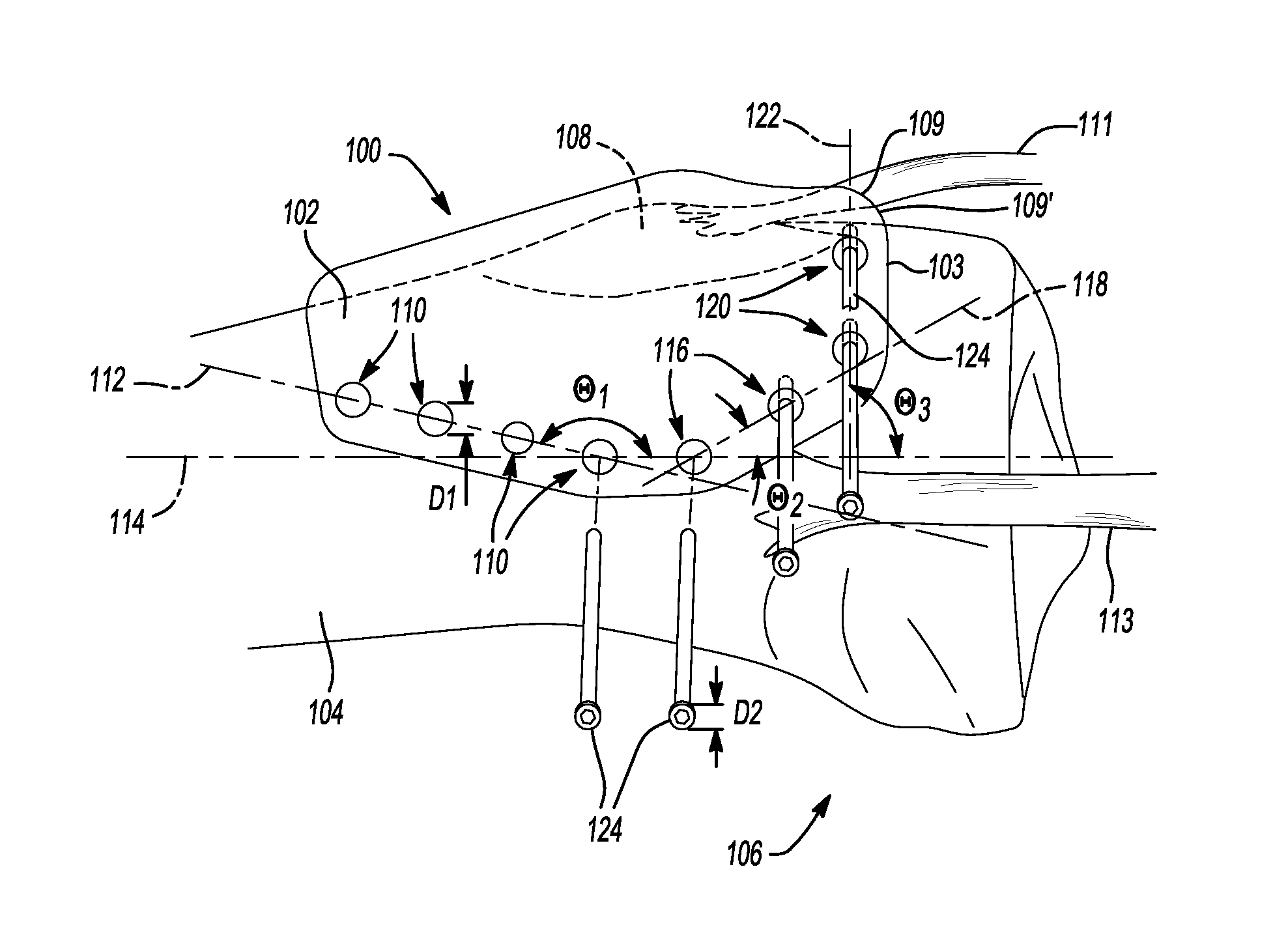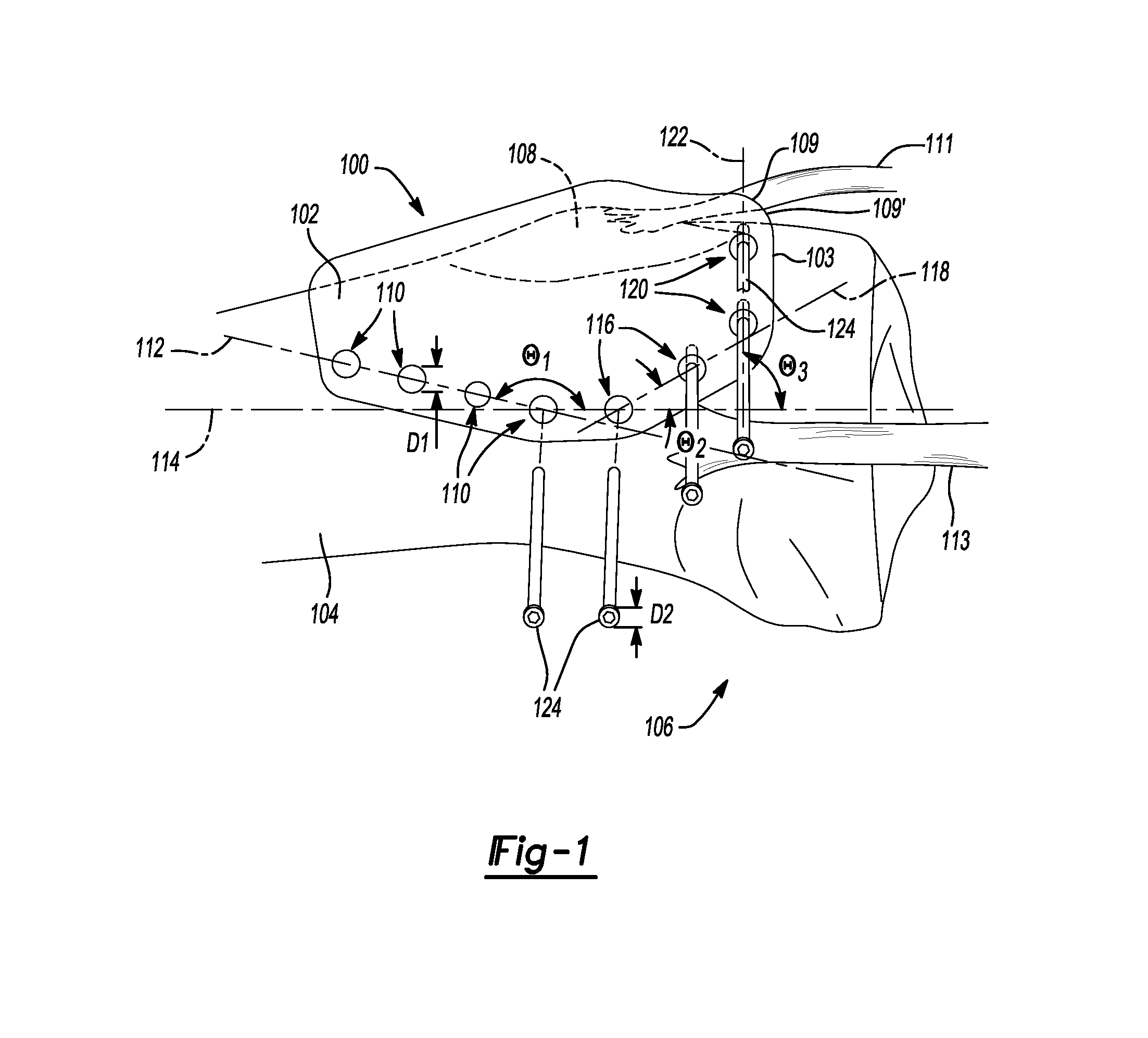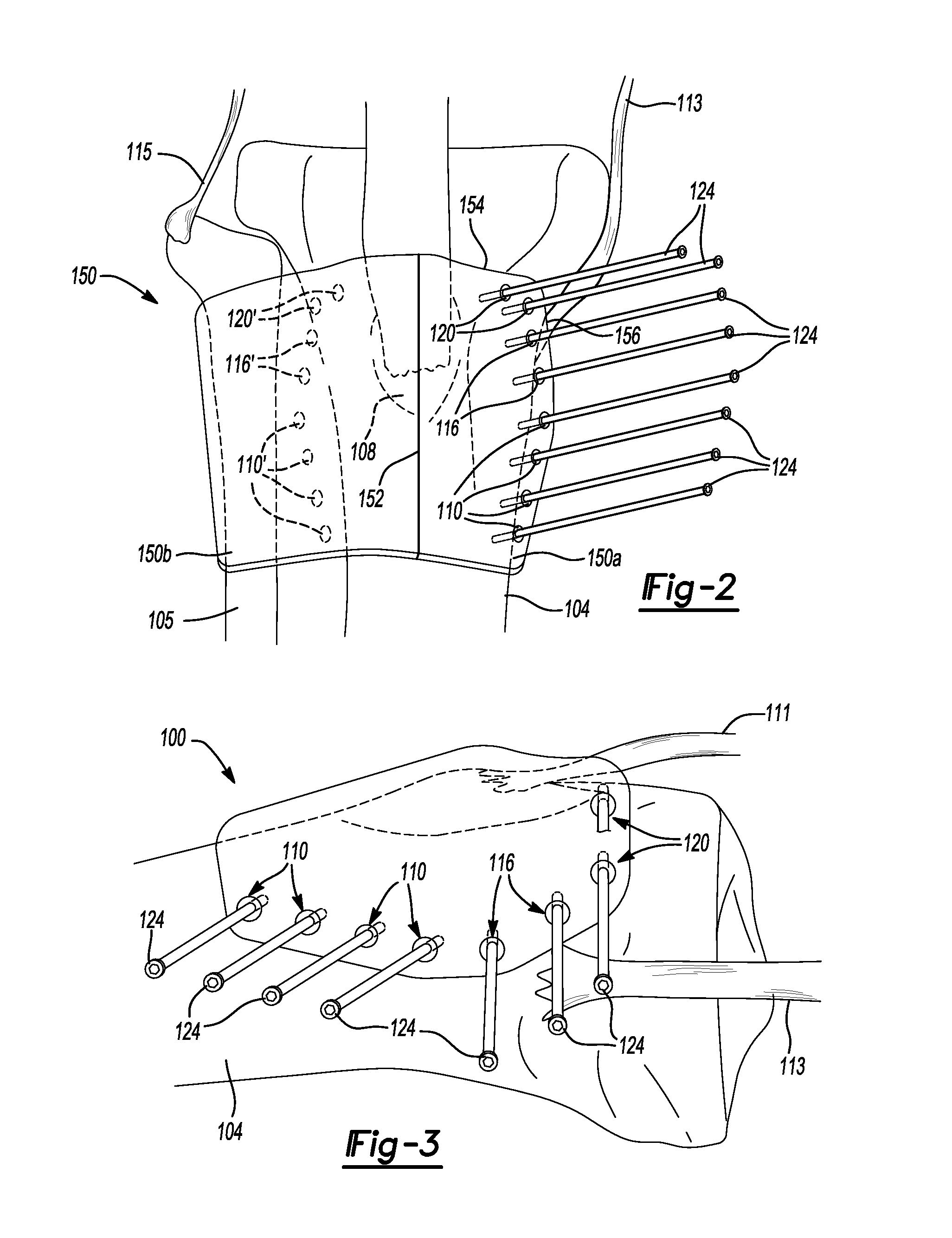Tibial Tubercule Osteotomy
a tubercule and osteotomy technology, applied in the field of tibial tubercule osteotomy, can solve the problems of mass production of commercially available systems and complicated use, and achieve the effect of promoting bone in-growth and reducing patellofemoral conditions
- Summary
- Abstract
- Description
- Claims
- Application Information
AI Technical Summary
Benefits of technology
Problems solved by technology
Method used
Image
Examples
Embodiment Construction
[0026]Example embodiments will now be described more fully with reference to the accompanying drawings.
[0027]The present teachings generally provide patient-specific tibial tubercle osteotomy guides that include a guide body defining a portion with a bone-engaging surface that conforms as a negative surface to a corresponding surface of a specific patient's tibia about the patient's tibial tubercle, and a guide portion that guides a surgical instrument to a specific location on the specific patient's tibia, wherein the bone-engaging surface and guide portion are configured during a pre-operative planning stage, in which a medical professional determines the location of a tibial tubercle osteotomy and amount of correction needed. In various embodiments, the guide body further defines a soft tissue engaging surface, wherein the soft tissue-engaging surface is configured during the pre-operative planning stage of a tibial osteotomy to conform as a negative surface to a corresponding su...
PUM
 Login to View More
Login to View More Abstract
Description
Claims
Application Information
 Login to View More
Login to View More - R&D
- Intellectual Property
- Life Sciences
- Materials
- Tech Scout
- Unparalleled Data Quality
- Higher Quality Content
- 60% Fewer Hallucinations
Browse by: Latest US Patents, China's latest patents, Technical Efficacy Thesaurus, Application Domain, Technology Topic, Popular Technical Reports.
© 2025 PatSnap. All rights reserved.Legal|Privacy policy|Modern Slavery Act Transparency Statement|Sitemap|About US| Contact US: help@patsnap.com



